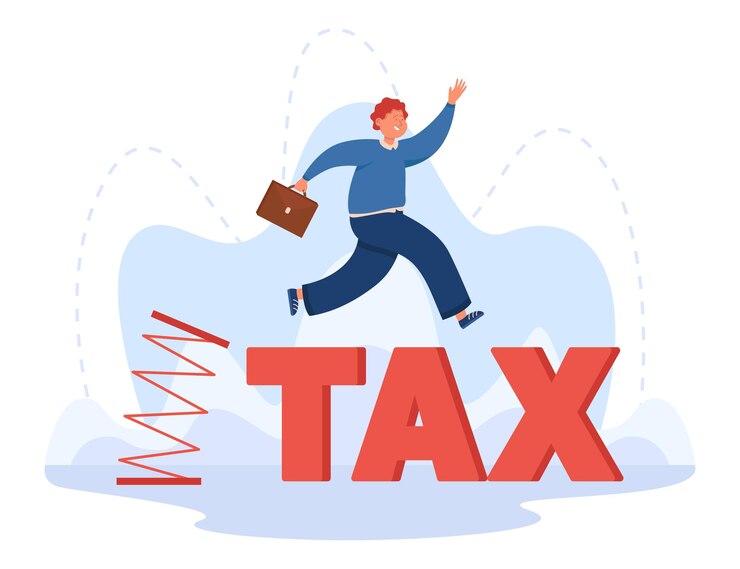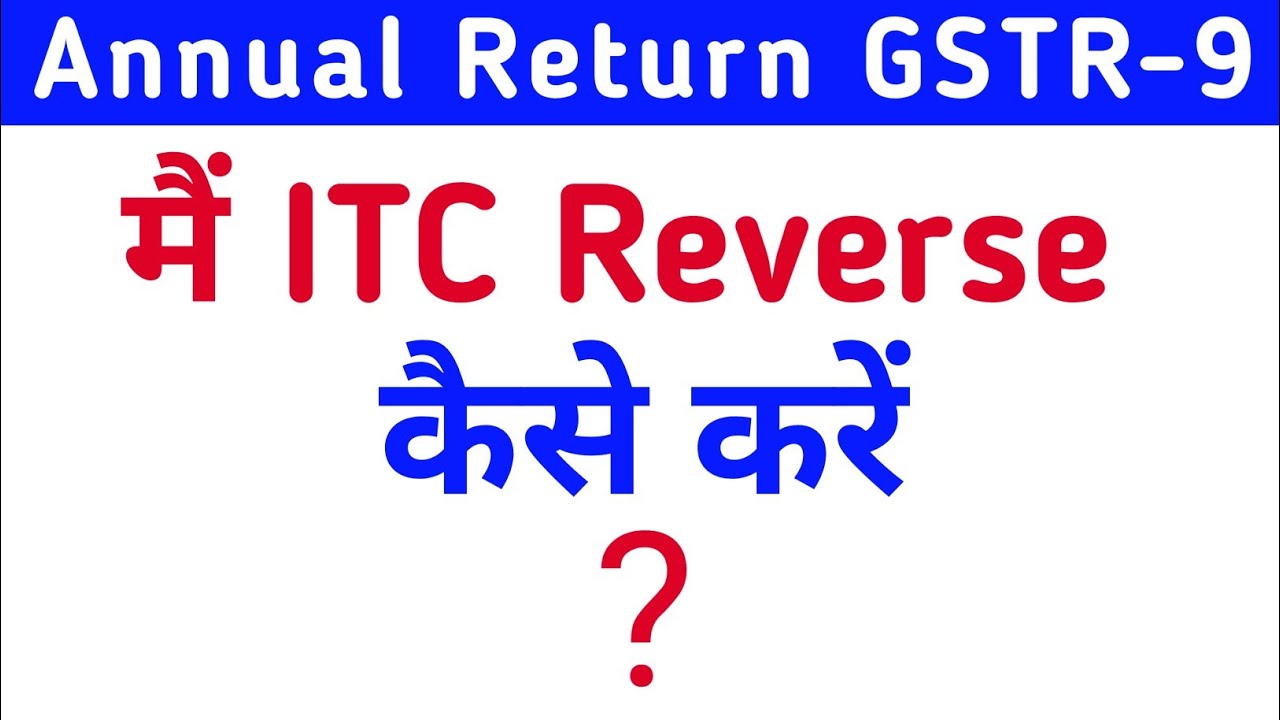ITC Reversal under GST
- 15 Aug 24
- 15 mins

ITC Reversal under GST
Key Takeaways
- ITC reversal is required when invoices remain unpaid for over 180 days, or when goods and services are used for non-business or exempt purposes.
- Specific rules like Rule 42 and Rule 43 provide formulas for calculating ITC reversals on inputs, input services, and capital goods based on their use.
- Reporting ITC reversals accurately in GSTR-3B and GSTR-9 is crucial to maintaining GST compliance and avoiding penalties.
- Transitional credits and reversals under rules such as Rule 44A must be managed carefully to align with changes in the GST law.
- Maintaining detailed documentation and conducting regular reconciliations are essential practices for managing ITC and ensuring compliance with GST regulations.
Input Tax Credit (ITC) reversal in the Goods and Services Tax (GST) framework is a mechanism that mandates taxpayers to withdraw the credit they have previously claimed under certain circumstances. This process is essential to prevent the misuse of the ITC scheme which is intended to only benefit those engaged in the taxable supply of goods and services. The reversal occurs primarily when the goods or services are used for non-business purposes, are exempt from GST, or when invoices are unpaid for a specified period. This ensures that the benefits of the tax credits are aligned with the actual tax liability.
Key Conditions for Reversal of ITC
There are several specific conditions outlined under GST law that necessitate the reversal of ITC. These include:

- Non-payment of Invoice: If the payment for an invoice is not made within 180 days from the date of issue, the ITC claimed on that invoice needs to be reversed. This can be reclaimed once the payment is made.
- Personal or Exempt Use: ITC must be reversed if the goods or services for which it was claimed are subsequently used for personal purposes or for making exempt supplies. This ensures that the tax credit system is used correctly and only for its intended purpose.
- Goods Returned or Services Unfulfilled: If goods are returned or services are found to be unsatisfactory after the ITC has been claimed, the credited amount must be reversed.
- Change in Use or Cancellation of Registration: A reversal is required if the usage of the inputs changes from taxable to non-taxable or exempt, or if the GST registration is cancelled.
These conditions are designed to maintain the integrity and effectiveness of the ITC system within the GST framework, ensuring that credits are closely matched to the taxable consumption of goods and services.
Calculating ITC Reversal Across Different Rules

The GST framework specifies detailed rules for reversing the Input Tax Credit (ITC) depending on the type of inputs involved—be it services, inputs, or capital goods. These reversals ensure that ITC is accurately reported and fraudulently claimed credits are minimized. Each rule addresses a different scenario, helping businesses calculate and report their ITC reversals precisely.
Reversal of ITC for Inputs and Input Services under Rule 42
Rule 42 of the GST laws is designed to guide businesses in calculating the reversal of ITC for inputs and input services that are not used exclusively for business purposes or are used for making exempt supplies. The rule specifies a formula that apportions ITC based on the percentage of usage in non-business activities or exempt supplies:
- Formula: (Total ITC × Common inputs usage factor)
- The common usage factor is calculated based on the proportion of exempt sales to total turnover or as directly attributed to non-business use.
- This ensures that ITC is only availed to the extent of it being used for taxable and business purposes.
Reversal of ITC on Capital Goods as per Rule 43
Rule 43 applies specifically to capital goods used by a business for both taxable and non-taxable (including exempt) purposes. It dictates a more complex method of ITC reversal to reflect the usage patterns over a longer period, typically the useful life of the capital goods:
- Formula: (Total ITC on capital goods ÷ 60 months ) × months used for exempt purposes
- This monthly proportionate method spreads the ITC reversal over five years, accounting for the gradual depreciation and usage of the capital goods.
- Businesses must keep meticulous records of the usage of these capital goods to correctly apply the rule and ensure compliance.
Both Rule 42 and Rule 43 require businesses to maintain detailed logs and calculations to support their ITC reversal claims, which must be regularly reviewed and updated according to actual usage patterns. This systematic approach helps in maintaining transparency and adherence to GST regulations, thereby avoiding potential legal complications.
Reversal Conditions under Rule 44: GST Cancellation and Composition Scheme Shift
Rule 44 specifically deals with scenarios where a business undergoes significant changes, such as the cancellation of GST registration or a shift from the regular taxation scheme to the composition scheme. Under such conditions, the ITC has to be reversed as follows:
- GST Cancellation: If a business's GST registration is cancelled, it must reverse the ITC on inputs held in stock and capital goods. This is because the business will no longer be liable to pay GST, and thus cannot claim the input tax credit.
- Composition Scheme Shift: When a business opts for the composition scheme, it is no longer eligible to claim ITC. Therefore, all ITC that was claimed while the business was under the regular scheme must be reversed. The calculation is based on inputs and capital goods in stock on the date of such transition.
Specific Reversal for Gold Dore Bars under Rule 44A from 1st July 2017
Rule 44A was introduced to address a specific situation that arose with the implementation of GST on 1st July 2017. This rule pertains to the reversal of ITC for gold dore bars — an intermediate product in gold production. Key aspects include:
- Background: Prior to GST, businesses could have accumulated ITC on purchases related to gold dore bars. With the change in tax structure post-GST, these credits needed to be aligned with the new system.
- Reversal Requirement: Effective from 1st July 2017, businesses were required to reverse the balance of transitional ITC that had been carried forward to the GST regime. This was necessary to prevent undue advantage or windfall gains due to the transition to a new tax system.
Critical Points in ITC Reporting
Accurate reporting of Input Tax Credit (ITC) is essential for compliance under the GST framework. Ensuring precise ITC reporting involves several critical considerations that businesses must adhere to in order to prevent discrepancies and potential penalties:
- Timeliness of Reporting: It's crucial to report ITC claims and reversals in the correct tax period. Delays or inaccuracies in ITC reporting can lead to financial penalties, interest charges, and issues during audits.
- Documentation and Record Keeping: Maintain comprehensive documentation for all transactions eligible for ITC claims, including purchase invoices, receipts, contracts, and evidence of payment. Proper documentation supports the authenticity of the ITC claim and facilitates easy verification during audits.
- Reconciliation of ITC Claims: Regularly reconcile ITC claims with purchase records and the GST paid on supplies. This reconciliation should be done monthly to ensure that all ITC claims are accurate and accounted for, thereby reducing the risk of discrepancies in tax filings.
- Adherence to Specific Rules: Compliance with specific GST rules related to ITC, such as Rules 42 and 43 for reversal conditions, is mandatory. Understanding and applying these rules correctly is key to valid ITC claims and reversals.
- Audit Preparedness: Always be prepared for GST audits by keeping all relevant records organized and accessible. This includes not only financial documents but also electronic records that might be required for a comprehensive audit trail.
By focusing on these critical points, businesses can ensure that their ITC reporting is accurate and compliant with GST regulations, thus avoiding unnecessary penalties and fostering smooth operational transitions under the GST regime.
How to Report ITC Reversal in GSTR-3B Form?
Reporting Input Tax Credit (ITC) reversals correctly in the GSTR-3B form is essential for maintaining compliance with GST regulations. Here’s a detailed guide on how to do it accurately:
- Identify the Applicable Sections in GSTR-3B:
- ITC reversals need to be reported in Section 4(B)(2) of the GSTR-3B form. This section is specifically designed to capture details about ITC reversals under different scenarios as mandated by the GST law.
- Calculate the ITC to be Reversed:
- Before filling out the form, calculate the exact amount of ITC that needs to be reversed. This calculation should be based on the reasons for reversal such as non-payment of invoices within 180 days, use of inputs for non-business purposes, or production of exempt supplies.
- Inputting the Details:
- Enter the total amount of ITC to be reversed in the respective fields for CGST, SGST, and IGST, based on your calculations. Ensure that these amounts are entered correctly to avoid discrepancies.
- Reasons for ITC Reversal:
- Although the GSTR-3B form does not require you to specify the reasons for ITC reversal in detail, maintaining an internal record of the reasons is crucial for audit purposes and future references.
- Consistency Check:
- Cross-verify the ITC reversal data with the records in your purchase register and other relevant accounting records. This step is crucial to ensure consistency and accuracy across all your GST filings.
- Reporting in Subsequent Returns:
- If an ITC reversal pertains to a previous tax period (for instance, if an invoice is paid after the 180-day period and the previously reversed ITC is now claimable), the reclaimed amount should be reported in the ITC claimed section of the GSTR-3B for the period in which the payment was made.
- Final Review and Submission:
- After entering all the details, review the entire form to ensure all information is accurate and correctly placed. Any errors in ITC reporting can lead to legal issues and financial penalties, making this final check extremely important.
Properly reporting ITC reversals in the GSTR-3B form not only helps in maintaining compliance but also assists in accurate financial planning and analysis. Businesses should take care to follow these steps meticulously to ensure that their GST filings are correct and complete.
Guidelines for Reporting ITC Reversal in GSTR-9 Form
GSTR-9 is the annual return form for regular taxpayers under GST. It is crucial for businesses to accurately report Input Tax Credit (ITC) reversals in this form to ensure compliance and accurate tax liability assessment. Here are some detailed guidelines for reporting ITC reversals in GSTR-9:
- Understand the Form Structure:
- GSTR-9 consists of various parts and tables that need to be filled. ITC reversals are primarily reported in Table 7 of the form. Familiarize yourself with all the sections of GSTR-9 to accurately input the necessary details.
- Gather Relevant Data:
- Compile all relevant data pertaining to ITC reversals throughout the year. This includes reversals required due to non-payment within 180 days, usage of inputs for exempt supplies, personal use, or any other reasons as specified under GST rules.
- Use Accurate Figures:
- Ensure that the figures you enter in GSTR-9 for ITC reversals match those declared in your monthly returns (GSTR-3B). Inconsistencies can lead to queries from the tax department or possible audits.
- Fill in Table 7 Correctly:
- Table 7 of GSTR-9 has several sections (7A to 7H) where you need to report details about ITC availed and reversed during the year:
- 7A: Total ITC availed (as per GSTR-3B)
- 7B: ITC reversed (as reported in GSTR-3B)
- 7C: Net ITC availed (7A - 7B)
- 7H: Details of ITC reversed due to specific rules or non-compliance.
- Table 7 of GSTR-9 has several sections (7A to 7H) where you need to report details about ITC availed and reversed during the year:
- Document Reasons for Reversal:
- Although GSTR-9 does not require detailed reasons for each reversal entry, maintaining documentation internally for each reversal reported is critical. This documentation may be required by GST auditors or for internal audits.
- Reconcile with Previous Returns:
- Reconcile the ITC reversals reported in GSTR-9 with those in the monthly GSTR-3B forms to ensure all reversals are accounted for and correctly reported. Discrepancies must be rectified in the annual return to avoid penalties.
- Review and Validate:
- Before submitting GSTR-9, review all entries, especially in Table 7, to validate the accuracy of the information. Errors in annual returns can be complex to correct and may lead to unnecessary complications with GST compliance.
- Consult a GST Professional:
- Considering the complexities involved in filling out the GSTR-9 form, particularly for ITC reversals, consulting with a GST professional or a tax advisor can be beneficial. They can provide expert advice and ensure that your returns are compliant with the current GST laws and regulations.
By following these guidelines, businesses can effectively manage their ITC reversal reporting in GSTR-9, ensuring compliance with GST regulations and minimizing the risk of penalties or audits due to incorrect reporting. Proper attention to detail and thorough preparation are key to accurately completing this crucial annual tax document.
Optimal Practices for Reporting ITC in GSTR-9
Reporting Input Tax Credit (ITC) accurately in the GSTR-9 annual return is crucial for ensuring compliance with GST regulations and for maintaining finance.
- Detailed Reconciliation: Conduct a thorough reconciliation of ITC claimed during the year with your purchase records and GST returns filed each month (GSTR-3B). This helps in identifying any discrepancies early and ensures that the ITC reported in GSTR-9 is accurate and fully substantiated.
- Maintain Comprehensive Documentation: Keep detailed records of all invoices and receipts that substantiate your ITC claims. This includes purchase invoices, debit notes, and other relevant documents. These records are essential not only for filing GSTR-9 but also in case of any future audits by tax authorities

- Utilize Automated Tools for Accuracy: Use accounting software or GST compliance tools that can help automate the reconciliation process. These tools often reduce errors and save time by matching input tax credits with purchase invoices automatically.
- Review Changes in GST Rules: Stay updated with any changes or amendments in GST rules regarding ITC. This is crucial as changes may affect how you report ITC in your GSTR-9, especially in terms of reversals or eligibility of certain credits.
- Segment ITC Data: Organize your ITC data into categories as required by GSTR-9 tables, such as inputs, input services, and capital goods. This segmentation helps in filling out the form more accurately and ensures that all types of input tax credits are properly accounted for.
- Cross-Verify with GSTR-2A: Compare your ITC claims with the auto-drafted GSTR-2A to ensure that all credits claimed are duly reflected in the suppliers' filings. Discrepancies between GSTR-2A and your ITC claims need to be investigated and resolved before filing GSTR-9.
- Prepare for Possible Adjustments: Prepare to make any necessary adjustments to your ITC as a result of the reconciliation process. This may involve additional ITC claims or reversals if discrepancies are found between your records and what was originally claimed.
- Double-Check Before Submission: Before submitting GSTR-9, double-check all entries related to ITC to ensure that there are no errors in the amounts or in the tax periods to which they relate. Mistakes in the annual return can be challenging to correct and may lead to penalties.
- Seek Professional Advice: Consider consulting with a GST expert or tax advisor when preparing your GSTR-9. Professional advice can help clarify complex issues, especially related to ITC claims and reversals, and ensure that your filing complies with current GST legislation.
By following these practices, businesses can optimize their ITC reporting in GSTR-9, minimize compliance risks, and maintain accurate tax records, ultimately contributing to smoother financial operations and audit processes.
💡If you want to pay your GST with Credit Card, then download Pice Business Payment App. Pice is the one stop app for all paying all your business expenses.




















